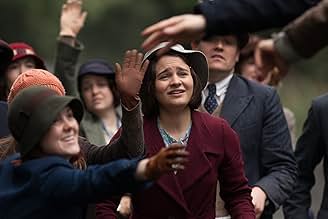This story highlights the struggle for individual respect and liberty that has been going on since the reformation. Today, people often attach words communist or socialist to the struggle of the individual. This film reminds us of the other side of the story: greed and power are the feudal and capitalist side of the story.
One flaw in the movie is that people assume the struggle between Jimmy and the priest is communism versus the church. But Jimmy was not a communist. Jimmy was a grass-roots liberal who supported his community and occasionally spoke out against the concentration of power. The church represents this concentration of power and the struggle to maintain the concentration of power.
During the 1920's, a large percentage of the world's "Wealth" was tied up in speculative investments. Corrupt politicians sided with the land holders and the "Robber barons". By 1924, economic experts started to announce that unfettered greed would lead to an economic crisis in the USA and Europe. In 1929, the US stock-market crash vaporized much of the world's wealth and centralized power among an even smaller percentage of the population.
The movie includes a lot of history that most people in the US and UK who were born before 1977 already know. However, for most of the world, the Irish history and the extent of the struggle between the rich and poor during those times is new.
This struggle continues today. Instead of hereditary land owners, we have large banks and other institutions that "influence" most of the world's "capitalist" governments. The government favors for corporations and privatization of government services that starting in the late 1970's continues to this day and is responsible for the depression of 2008.
Without government support for those who were thrown into poverty, the 2008 depression would have been as bad as the 1929 depression. I think the writers were trying to remind us about the consequences of unfettered greed.


































